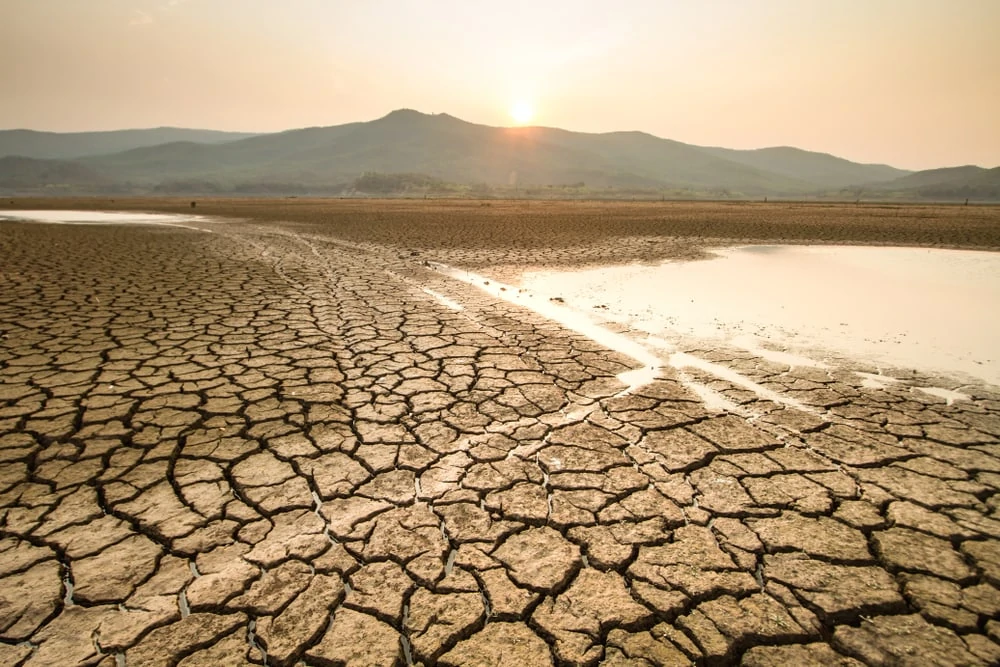No matter where we reside on our planet, natural disasters pose a constant threat to our lives and surroundings.
From hurricanes and blizzards to earthquakes and wildfires, natural disasters have a profound impact on us all. But do we truly comprehend the distinctions between these catastrophic events and the hazards they bring?
Look no further, for we have compiled comprehensive information on various types of natural disasters, tailored for both seasoned storm chasers and those seeking to enhance their preparedness for future environmental upheavals.
In this article, we will provide a concise overview of 24 different natural disasters. Additionally, we will present mind-blowing facts that shed light on the astounding dynamics of these cataclysmic occurrences, enabling a deeper understanding of the environment in which we reside.
What Is A Natural Disaster?
Before delving into the discussion about the various types of natural disasters, let’s take a moment to establish a clear understanding of what exactly constitutes a natural disaster.
Natural disasters typically involve the loss of life or inflict damage upon the affected areas. However, there is no fixed threshold that determines when an event is classified as a natural disaster. It can be challenging to categorize disasters based solely on their negative impacts, as the severity often relies on the infrastructure and preparedness of a specific location.
It is important to note that natural catastrophes are generally of natural origin, but they are considered disasters when they have adverse effects on human life. For instance, an avalanche that occurs in a remote mountain range without causing any harm to individuals would not be classified as a natural disaster. Conversely, an earthquake that devastates a town would undeniably fall into the category of a natural disaster.
As a result, any event triggered by environmental causes or processes that leads to harm to people can be labeled as a natural calamity. The concept is broad and encompasses a wide range of events, which is why it lacks a precise definition.

24 Extreme Types of Natural Disasters
Regardless of whether you reside in the tranquil Pacific Ocean or amidst the bustling streets of central Europe, the threat of a natural catastrophe looms overhead.
As individuals and communities, we must proactively prepare ourselves to confront the possibility of such disasters, taking both individual and collective actions. However, it is essential to first comprehend the various types of natural disasters, their causes, and the risks they pose before embarking on preparedness measures.
To facilitate your understanding, here is an alphabetical breakdown of the 24 distinct types of natural disasters that impact our planet. By familiarizing yourself with these categories, you will gain valuable insights into the diverse environmental hazards we all encounter.
1. Avalanches

At the top of our list is the formidable avalanche—a massive accumulation of snow that tumbles, slips, or flows down slopes. Although avalanches may contain rocks and debris, they are primarily composed of snow and possess unique characteristics that set them apart from other types of landslides.
Areas with substantial annual snowfall are the primary concern for avalanches, as these events require a significant amount of snow to occur. Avalanche occurrences are frequently observed in mountainous regions like North America’s Rocky Mountains, Europe’s Alps, and south-central Asia’s Himalayas. However, even in regions with adequate snowfall, the slope’s steepness plays a critical role in avalanche formation.
While avalanches pose the greatest threat to individuals engaging in recreational activities in snowy, mountainous areas, they also pose significant dangers to communities residing in alpine settings. Burial under massive slabs of snow poses a primary risk during an avalanche, potentially devastating lodges and even entire towns.
Avalanche forecasting and mitigation involve a multidisciplinary approach. Before venturing into backcountry skiing or winter camping, it is essential to check local avalanche forecasts. Winter sports enthusiasts are strongly advised to consider enrolling in avalanche safety and rescue courses to enhance their preparedness and response capabilities.
2. Blizzards
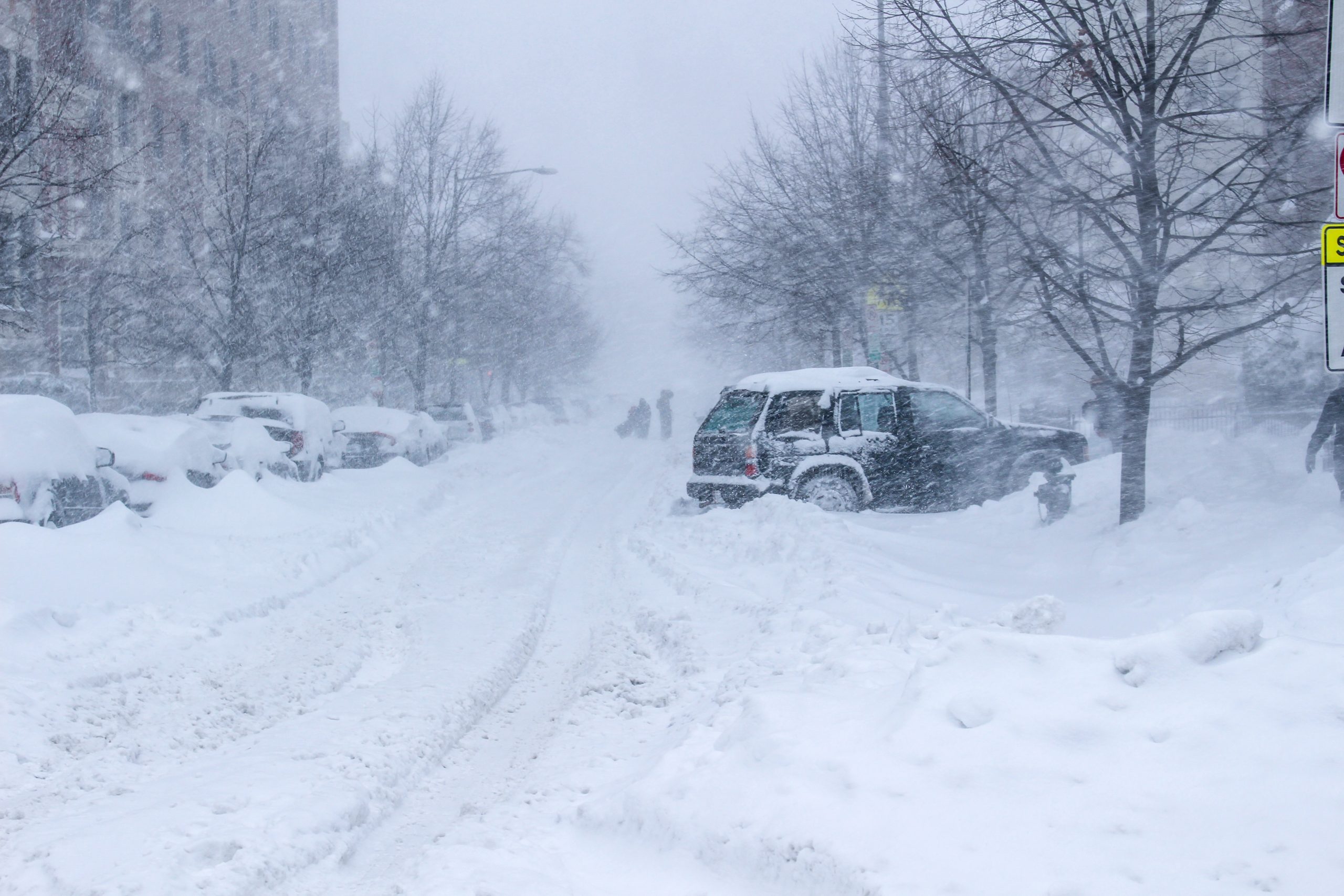
Blizzards, as defined by the National Weather Service in the United States, are storms that persist for more than three hours and exhibit specific characteristics:
- Winds exceeding 35 mph (15.7 m/s)
- Visibility reduced to less than 0.25 miles (400 m)
- Substantial snowfall or blowing snow
Areas with sufficiently cold temperatures to produce significant snowfall are typically the main concern for blizzards. While snowfall itself is not a prerequisite for a storm to be classified as a blizzard, there must be enough snow on the ground to be whipped around and create poor visibility, which is a defining characteristic of a true blizzard.
Experienced forecasters, particularly when associated with approaching low-pressure systems, often find it relatively straightforward to anticipate blizzards associated with major storm systems. However, accurate predictions can be more challenging in rural regions, putting people at risk.
Blizzards can be hazardous for hikers and mountaineers, especially if they result in white-out conditions that make navigation difficult. Motorists are also at risk as blizzards can lead to treacherous road conditions with extremely low visibility, increasing the likelihood of accidents.
3. Cold Waves

A cold wave is a natural disaster characterized by a rapid and significant drop in temperature within a 24-hour period. While cold weather alone may not necessarily result in a natural disaster, a sudden and drastic temperature decline can have severe implications for the inhabitants of an area.
Interestingly, the classification of a weather phenomenon as a cold wave is not based on reaching a specific temperature threshold. Instead, it is determined by the speed at which the temperature decreases. Local weather services refer to local climate norms to assess whether an event qualifies as a cold wave, as perceptions of “cold” vary greatly from one region to another.
Multiple factors can contribute to the occurrence of a cold wave. The arrival of a powerful high-pressure system from polar regions is a common cause. Additionally, the movement of the jet stream can swiftly transport extremely cold weather southward.
The frigid temperatures themselves pose the greatest danger during a cold wave, increasing the risk of hypothermia and other cold-related injuries. Rapid formation of ice and frost can also wreak havoc on infrastructure.
Aircraft and various equipment are particularly vulnerable to the effects of cold waves. Extreme cold can cause diesel fuel to gel or drain car batteries, among other issues. Consequently, it is crucial to exercise caution whenever extreme cold weather is forecasted.
4. Droughts
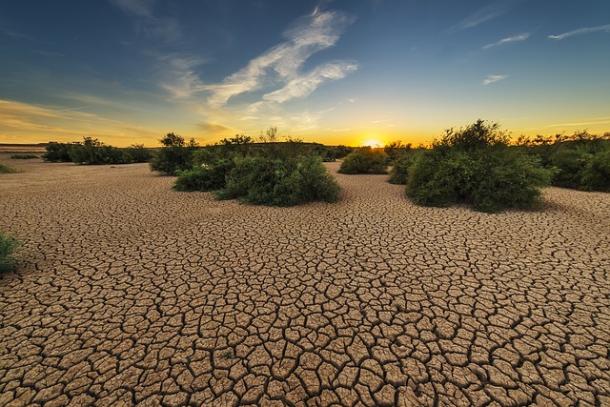
Droughts, much like cold waves, are challenging to define due to their subjective nature. They are typically characterized as an extended period of drier-than-normal conditions or other water-related issues.
However, the term “drier-than-normal” is highly subjective, as what may be considered dry in one region could be considered wet in another. Furthermore, rainfall patterns can vary significantly between different times of the year, with abundant rainfall occurring in one area while minimal precipitation falls in another.
Consequently, determining the onset and conclusion of a drought is not always straightforward. Climatologists often rely on changes in rainfall patterns or low water levels in local lakes and reservoirs to identify the presence of a drought.
Droughts can persist for varying durations, ranging from a few weeks to several years. In fact, an ongoing drought in Ethiopia that began in 2015 is still affecting the region as of 2021. Humanitarian organizations anticipate significant food shortages for tens of millions of people in the affected area due to the devastating impact on the land. Although the duration of a drought may be uncertain, its consequences in terms of human suffering are very real.
Despite the challenges associated with forecasting and defining droughts, their impact on communities and the environment cannot be overlooked.
5. Earthquakes
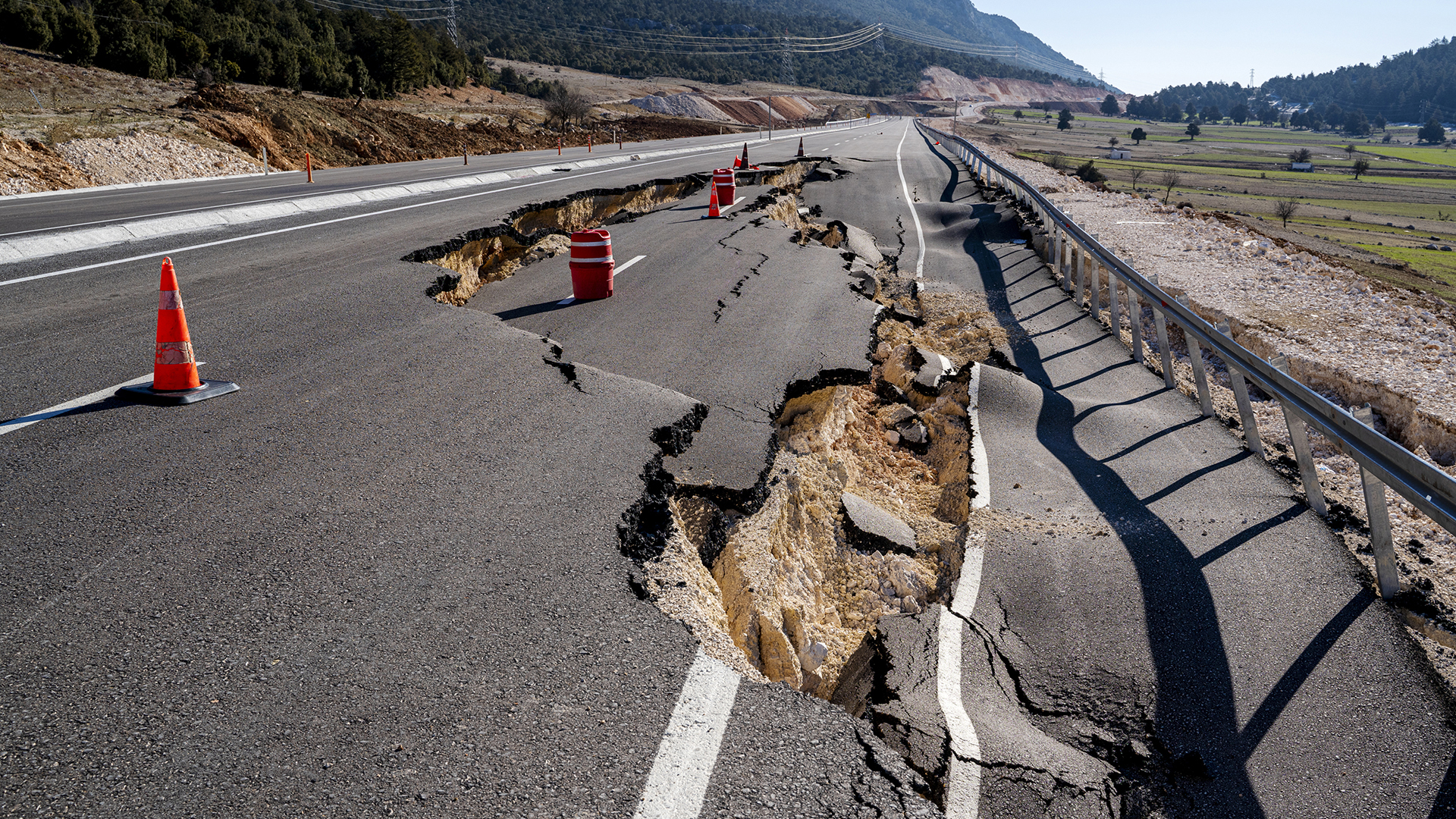
Earthquakes, one of the most unpredictable natural disasters, occur when the Earth’s tectonic plates suddenly and violently shift.
To grasp the mechanics of earthquakes, we must first understand that the Earth’s surface is not a continuous layer. Instead, it is composed of multiple plates that constantly move and interact with each other.
When these plates abruptly slide past one another, significant shaking can occur on the Earth’s surface. While minor earthquakes happen frequently, major earthquakes can result in catastrophic damage and loss of life.
Two notable recent earthquakes are the devastating events in Nepal in 2015 and Haiti in 2010. Both incidents led to the destruction of numerous homes and claimed the lives of thousands.
Some earthquakes can trigger secondary natural disasters that pose an even greater threat. For example, earthquakes like the Tōhoku earthquake in Japan in 2011 generated powerful tsunamis. The tsunami following the Tōhoku earthquake reached staggering heights of around 130 feet (40 meters). These secondary disasters can amplify the devastation caused by the initial earthquake.
6. Floods
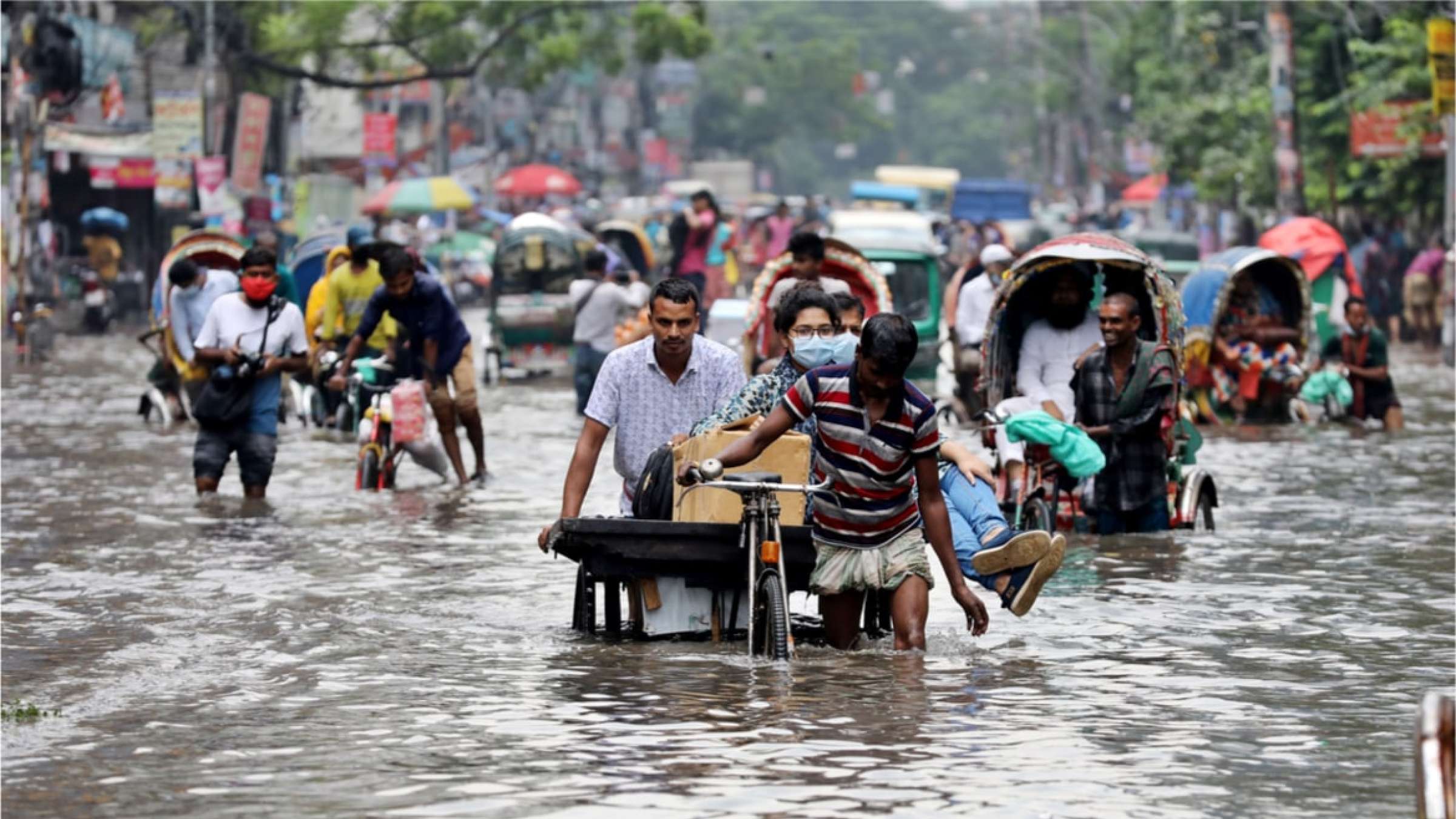
Floods occur when land that is typically dry becomes submerged in water for a temporary period. While this definition may seem broad, it encompasses the variability of floods as a natural disaster.
What constitutes a flood in one location may not be considered a flood in another, as with many types of natural disasters. Nevertheless, many of us can easily recognize a flood by observing a significant amount of water inundating streets or urban areas.
While heavy rainfall is often a primary cause of floods, there are other contributing factors. For instance, storm surges, which we will discuss in relation to hurricanes later in this article, can also lead to flooding under certain circumstances.
It is crucial to recognize that floods can be far more dangerous than they initially appear. Even a seemingly minor flood with a water depth of around 6 inches (15 cm) has the potential to sweep you off your feet and cause harm.
As a general rule, it is important to never attempt to traverse through a flooded area, regardless of how seemingly manageable it may appear. Walking, driving, or swimming through floods is almost always a risky choice due to the swift and unpredictable currents that can pull you into dangerous situations.
7. Flash Floods
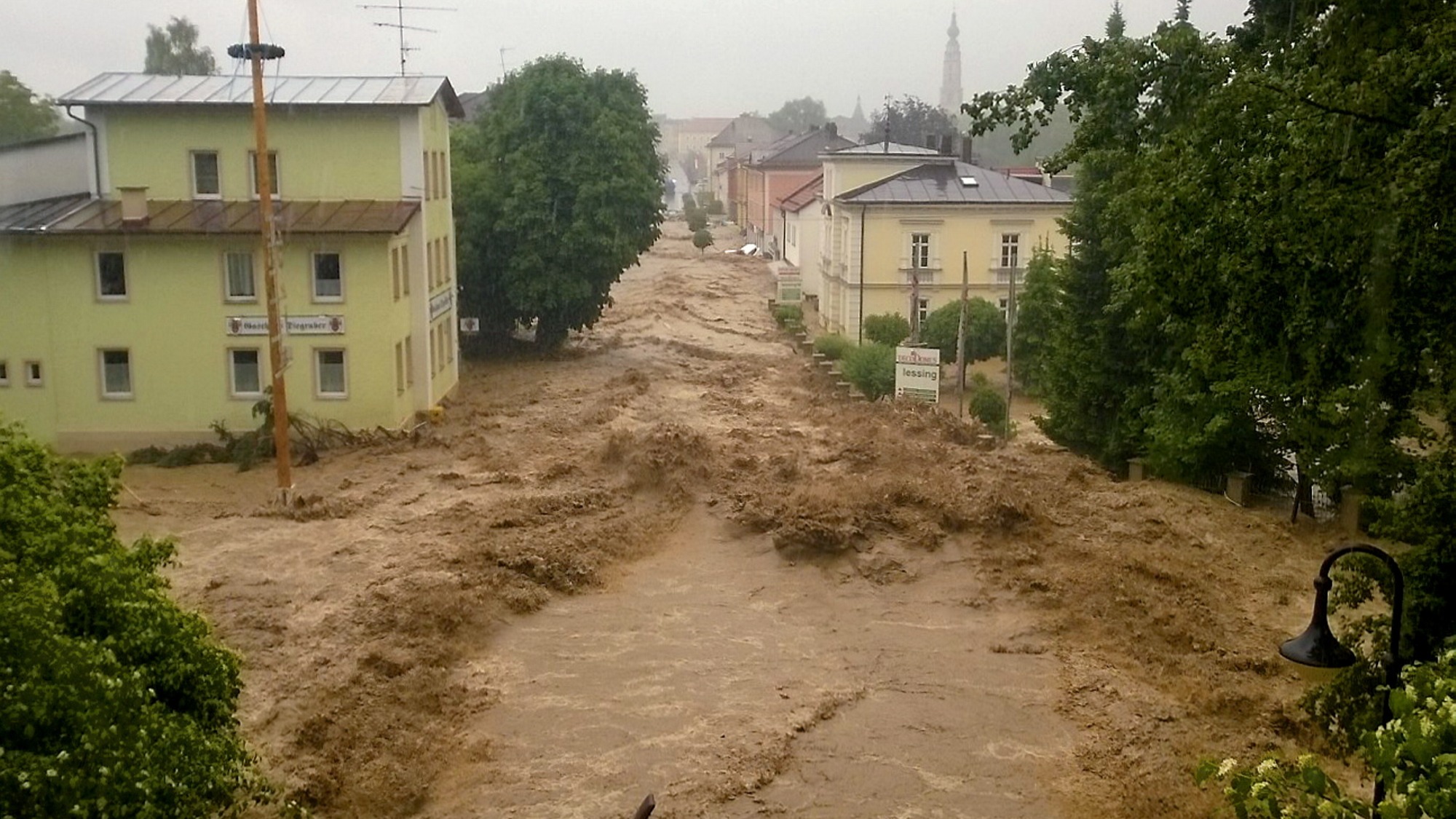
Flash floods are characterized as flooding that begins within a short period of six hours after heavy rainfall or other water-related causes, as defined in weather forecasting.
Similar to regular floods, flash floods are associated with significant storms. For instance, hurricanes and other meteorological events can result in rapid and severe flooding within a brief timeframe.
What makes flash floods particularly alarming is that they can occur in areas where there has been no recent rainfall. Even under clear skies, sudden surges of water can unexpectedly occur in various regions, especially in narrow canyons found in the American Southwest.
Typically, a thunderstorm upstream is responsible for triggering such flash floods. However, a dam breach or malfunction can also be a potential cause. These sudden floods pose a significant danger to hikers and canyoneers, as there are often minimal visible signs or warning indicators before they strike.
8. Hailstorms

Despite the name, meteorologists generally do not classify hailstorms as a distinct type of storm. Instead, significant hail events, often described as “hurricane-like conditions,” are commonly observed within large thunderstorms.
Hail formation is associated with powerful updrafts, which are upward streams of air, particularly within supercell thunderstorms. Understanding the intricate process of hail development can be a bit perplexing, so if you’re interested in learning more, you can watch a video from The Weather Channel that delves into this topic.
Hail can pose a significant threat to humans and cause extensive damage, regardless of its varying origins. Even though most hailstones are relatively small, larger ones can potentially harm unsuspecting individuals on the ground.
In addition to the potential harm to individuals, hail is also responsible for substantial financial losses. In the United States alone, it is estimated that hail damage costs hundreds of millions of dollars each year, according to the Insurance Information Institute. In fact, a study suggests that hail damage caused over $13 billion in losses in 2019 alone. These figures highlight the significant impact hail can have, both in terms of human safety and economic consequences.
9. Heat Waves

A heat wave is an extended period of extremely high temperatures that serves as the opposite of a cold wave.
The definition of a heat wave varies depending on the location, similar to cold waves. There is no universally agreed-upon criteria to identify a heat wave. However, it is generally characterized as a span of two or three days with temperatures surpassing the historical average for the area.
For instance, a heat wave in Montreal, Canada, may be defined as several consecutive days with temperatures reaching 100 degrees Fahrenheit (38 degrees Celsius). On the other hand, such temperatures in Iran’s scorching Lut Desert may be considered quite moderate.
The primary concern during a heat wave is the risk of severe dehydration, which can lead to life-threatening conditions like heat stroke. While younger individuals, older adults, and those with weakened immune systems are particularly vulnerable during heat waves, anyone can be affected by severe heat-related illnesses.
It is crucial to stay cool and well-hydrated when a heat wave is forecasted. To mitigate the risk of heat stroke or similar ailments, it is recommended to drink plenty of water, seek air-conditioned environments, and minimize strenuous physical activity as much as possible.
10. Ice Storms
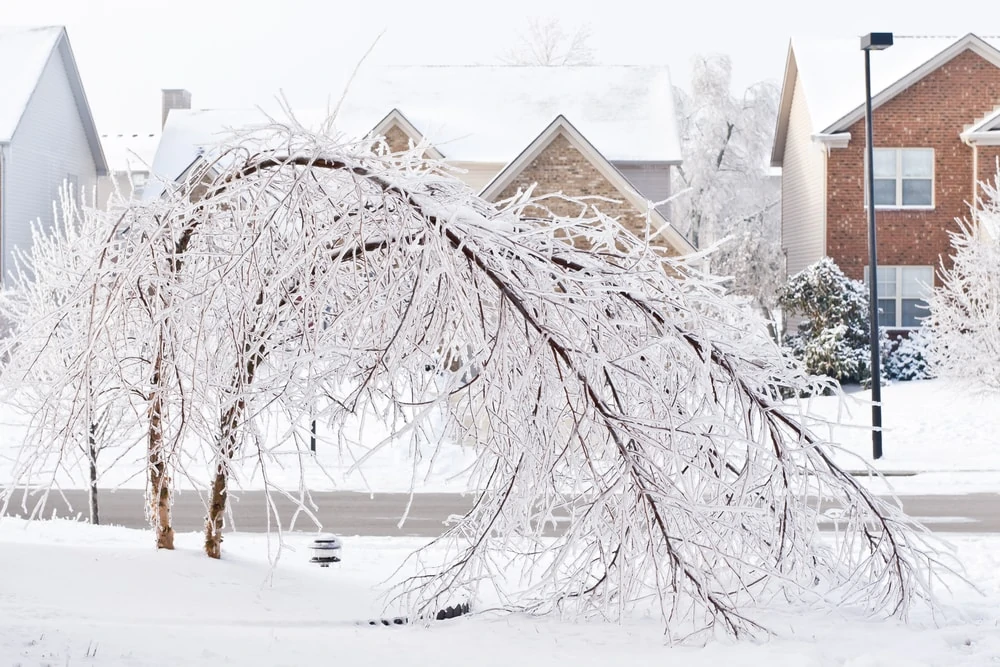
Ice storms occur when substantial amounts of freezing rain fall during the winter season. According to the National Weather Service (NWS) in the United States, an ice storm is typically defined as a weather event that results in 0.25 inch (6.4 mm) or more of ice accumulation on various surfaces, including trees, roads, and buildings.
Unlike intense thunderstorms, most ice storms are not characterized by violent conditions.
In the case of an ice storm, a thin layer of warm air above the ground, located several hundred feet high, leads to the formation of ice instead of snow. As snowflakes descend into this warm layer, they melt and then refreeze upon reaching the colder air near the Earth’s surface, resulting in freezing rain.
The presence of ice on surfaces such as roads poses significant hazards. Consequently, ice storms are notorious for causing car accidents, particularly in urban areas. Additionally, the weight of ice accumulation on trees and utility poles during cold weather can lead to extensive power outages and other types of damage.
11. Impact Event

Impact events are collisions between celestial bodies, and they stand out as one of the few natural disasters that originate from outside our planet Earth. In this discussion, we focus specifically on meteor impacts with Earth.
Fortunately, such impact events are rare occurrences on Earth. This is good news for us humans and all the other living species on our planet, considering the potential for immense devastation caused by meteor impacts.
The most recent notable meteor event was the Chelyabinsk meteor in 2013. This meteor entered Earth’s atmosphere over Chelyabinsk Oblast, Russia, and exploded approximately 14 miles (23 kilometers) above the ground. Although the incident itself was not the primary concern, the explosion caused damage to numerous buildings and resulted in over 1,500 people seeking medical attention for their injuries.
An earlier impact event, known as the Tunguska event, took place in 1908 and had a significant impact. This meteor’s landing in what is now Krasnoyarsk Krai, Russia, flattened an estimated 80 million trees.
While impact events are infrequent, they have the potential to cause significant damage, injuries, and loss of life. The thought of a massive rock hurtling towards the Earth’s surface is undoubtedly unsettling. However, various space agencies, including NASA, are actively working on methods to detect and alert us about potential meteor strikes in advance.
12. Landslides

A landslide refers to the significant movement of debris or rock down a slope, as defined by the United States Geological Survey. This type of event falls under the category of “mass wasting,” which involves the gravitational movement of soil or rock.
Landslides occur in various parts of the world and can result in significant damage depending on their scale.
One notable example of a landslide is associated with the eruption of Mount St. Helens, which remains the largest known landslide in the history of the United States. This event occurred in 1980 when the volcano erupted. The landslide is estimated to have rapidly traveled downhill at speeds ranging from 70 to 150 miles per hour (112 to 240 km/h), leaving behind a massive amount of debris measuring over 0.67 cubic miles (2.8 cubic kilometers).
Volcanic eruptions, earthquakes, and heavy rainfall are all factors that can trigger landslides. While scientists can sometimes identify slopes prone to landslides, predicting the exact timing of a landslide is challenging due to the numerous factors involved in its formation.
13. Limnic Eruptions
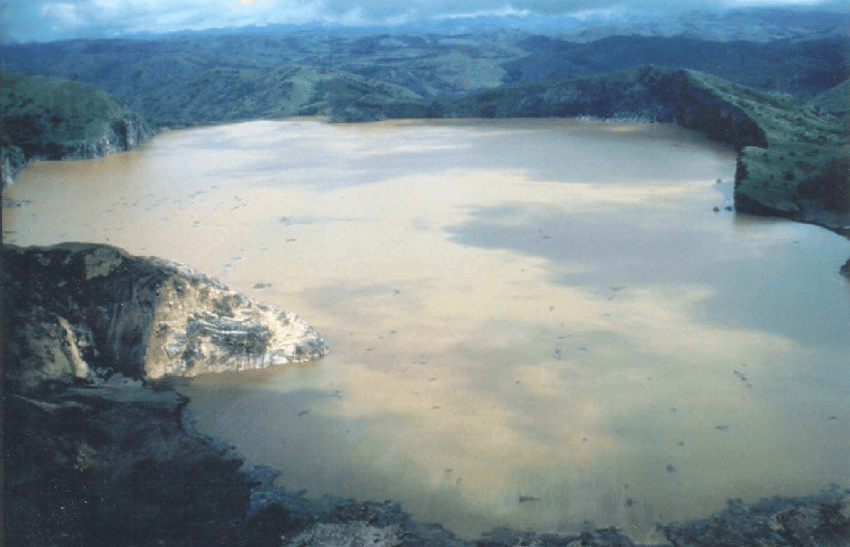
An unusual type of natural disaster known as a limnic eruption, or “exploding lake,” occurs when there is a sudden and violent release of carbon dioxide from the bottom of a freshwater lake.
Although limnic eruptions are rare, they have caused significant devastation in two lakes in west-central Africa: Lake Nyos and Lake Monoun, resulting in the loss of hundreds of lives, both human and animal.
In these cases, the geology beneath the lakes has allowed for the accumulation of large amounts of carbon dioxide. As more carbon dioxide dissolves into the water, it becomes highly pressurized at the bottom of these deep lakes.
Under normal circumstances, the lakes would continue to absorb carbon dioxide until reaching a saturation point. However, if a triggering event, such as a landslide, occurs in the vicinity of the lake, the accumulated pressure can be suddenly released, resulting in an explosion.
It’s important to note that the explosion occurs in the air and is not as devastating as one might imagine. Since carbon dioxide is heavier than oxygen, it displaces the oxygen in the surrounding area when released from the lake, leading to asphyxiation for humans and other animals in close proximity to the lake.
Furthermore, the eruption of Lake Nyos in 1986 generated a 60-foot (20-meter) tsunami wave, adding another layer of destruction to the already catastrophic event.
In response to the threat posed by these lakes, scientists have implemented preventive measures, such as installing a large pipe beneath Lake Nyos after its eruption in 1986. The effectiveness of these measures remains to be seen, as continued monitoring and research are necessary to ensure the safety of nearby communities.
14. Mudslides
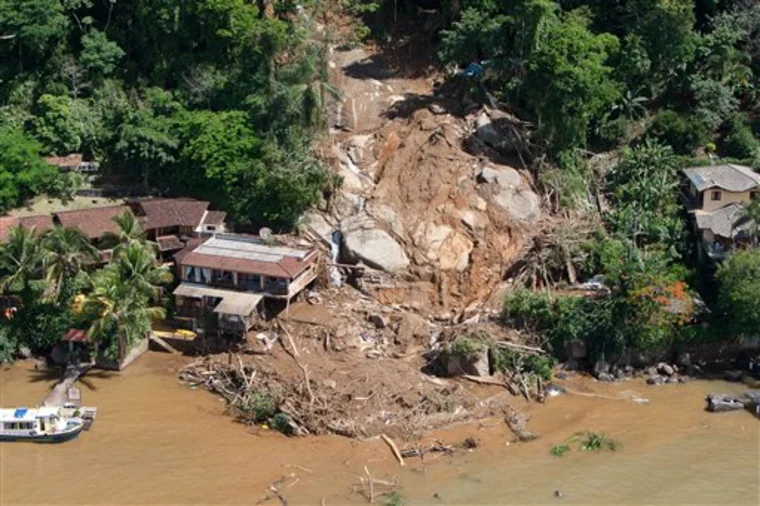
Mudslides are a specific type of landslide characterized by the movement of mud and other debris at a rapid pace.
These mudslides can occur as a result of various factors, including heavy rainfall and earthquakes. However, slopes that have undergone deforestation for agricultural or developmental purposes are particularly vulnerable to mudslides due to the destabilization of the soil structure.
The Oso mudslide in 2014, which took place near the town of Oso in Washington state, stands as one of the most severe mudslides in recent U.S. history.
In the days leading up to the event, there had been periods of heavy rainfall in the region surrounding Oso, situated along the North Fork of the Stillaguamish River. While the exact triggers of the landslide remain unclear, the impact was devastating: 43 lives were lost, and over 50 structures were destroyed.
Predicting mudslides, much like landslides, is challenging for scientists. However, ongoing efforts are being made to develop improved methodologies that can provide more accurate forecasts for areas prone to landslides.
15. Pea Soup Fog
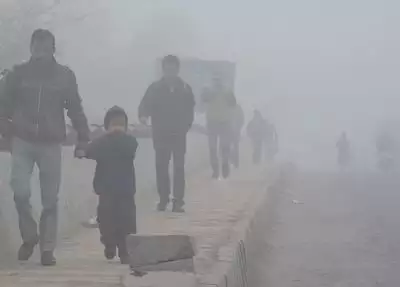
Pea soup fog is a distinct type of smog that blankets major cities with a yellowish-black haze. It is a noxious blend of fog, soot particles, and sulfur dioxide that can linger over an area for hours, days, or even weeks.
You might be inclined to think that smog is solely caused by human activities and therefore not a natural disaster. However, while the pollutants within the fog are indeed human-caused, the persistent fog itself is a meteorological phenomenon.
The most well-known occurrence of pea soup fog is the Great Smog of London in 1952, which resulted in the deaths of an estimated 4,000 to 12,000 people (official estimates at the time were likely inaccurate).
During this event, a strong anticyclone settled over London, leading to a widespread temperature inversion. This inversion trapped cold air beneath a layer of warmer air, preventing proper mixing with other parts of the atmosphere.
While temperature inversions occur naturally in many cities, the burning of coal for home heating during the mid-20th century contributed to the high levels of soot and sulfur dioxide that combined with the inversion.
In recent years, the reduction of coal-fired heating in major cities and advancements in technology have helped mitigate the risk of pea soup fog. However, areas with significant air pollution and frequent temperature inversions can still experience this type of natural disaster.
16. Sinkholes

The thought of the ground beneath us collapsing is undoubtedly unsettling. Sinkholes pose a significant threat to individuals residing in certain regions worldwide.
Sinkholes are formations that occur beneath the surface of the land and lack external drainage. They can range in size from small cavities to large craters spanning over 100 feet (60 meters) in diameter, exhibiting a wide range of dimensions.
Typically, sinkholes form in areas where the underlying rock consists of soluble materials such as limestone, salt deposits, or carbonate rock.
Over time, groundwater gradually dissolves the rock, creating a void in the bedrock. When the pressure on the weakened area becomes too great, the ground collapses, leaving behind a substantial sinkhole.
Certain regions are more susceptible to sinkhole formation due to the composition of the underlying bedrock. Florida, in particular, is renowned for its prevalence of sinkholes. Unfortunately, current technology does not offer a reliable means of predicting their occurrence.
17. Solar Flares
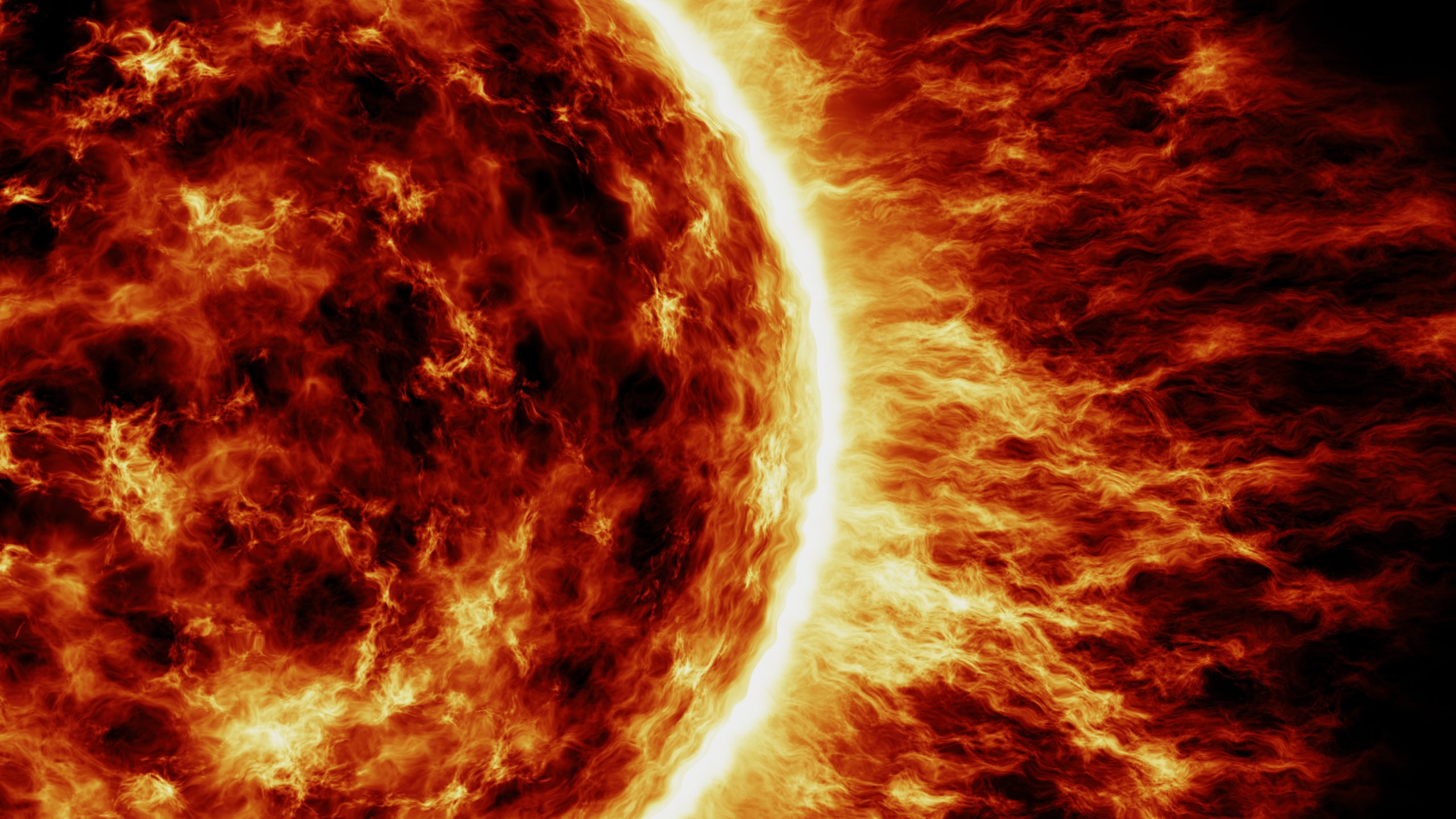
Solar flares may not occur directly on Earth, but their impact on our planet is very real and significant.
A solar flare is a massive explosion that takes place on the surface of the sun, albeit infrequently. Despite the vast distance between our sun and Earth, these solar flares can greatly affect our planet’s magnetic field.
The energy emitted by solar flares and the resulting geomagnetic storms can cause disruptions such as electrical power outages and malfunctioning communication satellites. These flares can even interfere with radio transmissions on Earth, which is quite unsettling.
One notable example of a solar flare affecting humans is the geomagnetic storm that caused a power blackout in parts of Canada in 1989. Over 6 million Canadians were affected as power transmission was disrupted in Quebec, with impacts felt as far as New Jersey in the United States.
Even though the 1989 geomagnetic storm occurred over 25 years ago, solar flares still pose a risk to power grids and communications systems. Space agencies around the world have been actively studying this issue, but further research is needed to develop reliable solutions in the face of these natural disasters.
18. Subsidence

Subsidence, although similar to sinkholes, has distinct characteristics that set it apart. Unlike sinkholes, which form as groundwater dissolves the bedrock, subsidence occurs when a significant amount of groundwater is depleted from the underlying rock.
Areas with intensive irrigation practices, such as California in the United States, often experience this type of water loss. As the water gradually diminishes, the land surface gradually lowers in elevation.
The effects of land subsidence can be widespread, making it challenging to detect. However, in urban areas like Mexico City, it can cause significant problems, such as the uneven sinking of the historic Basilica of Our Lady of Guadalupe, a cultural icon.
In some cases, engineers may employ techniques like constructing additional foundations to mitigate minor subsidence risks for vulnerable structures. However, a perfect solution to address subsidence has yet to be found.
19. Thunderstorms
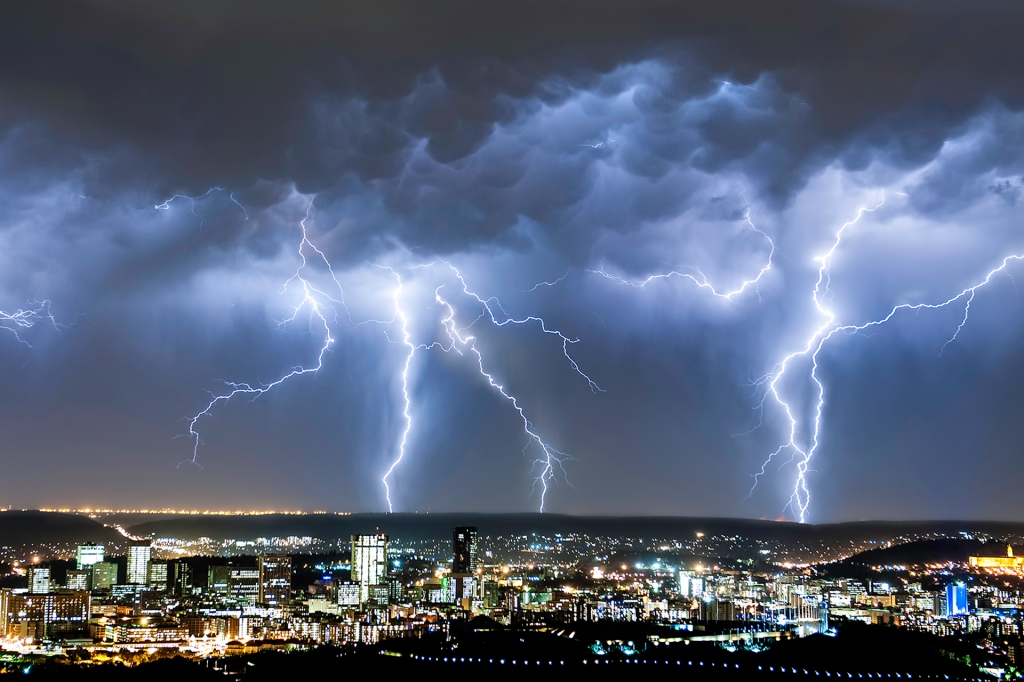
While thunderstorms are often associated with natural disasters, they are not considered disasters on their own.
Thunderstorms are atmospheric disturbances that occur when warm, moist air rises and undergoes convection in the lower atmosphere. Lightning, which produces thunder, is a common characteristic of thunderstorms.
However, thunderstorms themselves are not the primary concern; rather, it is the combination of other severe weather elements that can make them dangerous. These elements include destructive straight-line winds, flash floods, hail, lightning, and even tornadoes.
20. Tornadoes
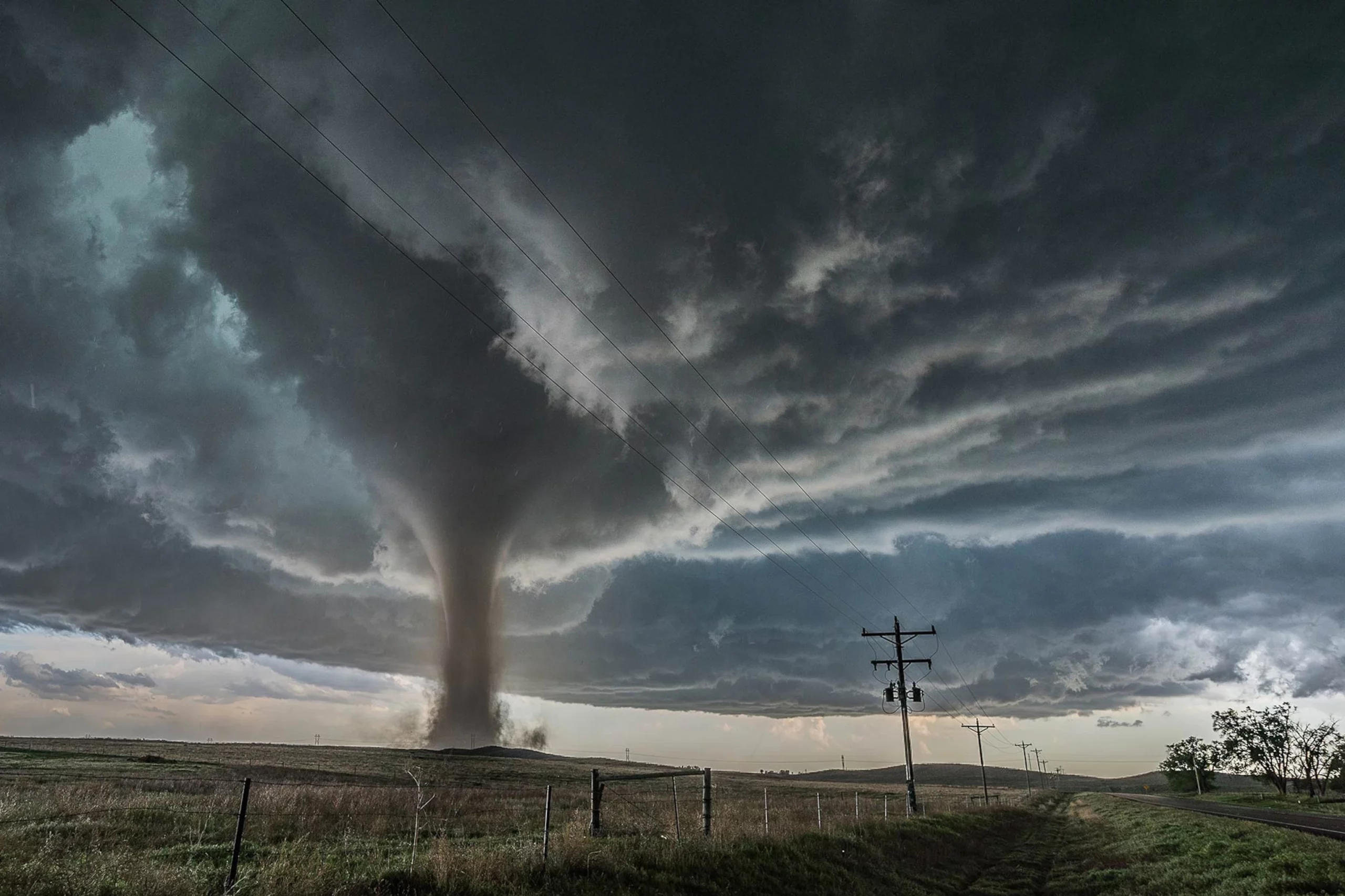
Tornadoes are a common occurrence in many parts of the world and are considered a significant natural disaster.
A tornado is a powerful and rapidly rotating column of air that extends from a cumulonimbus cloud. These destructive phenomena can reach wind speeds of hundreds of miles per hour, causing widespread damage in their path.
Certain regions, like the infamous “Tornado Alley” in the United States, experience a higher frequency of tornadoes. The exact causes of tornado formation are still not fully understood by meteorologists, making their prediction a challenging task.
If you receive a tornado watch or warning in your area, it is crucial to take immediate action and seek shelter. Find a designated storm shelter if available, or move to the lowest level of a sturdy building away from windows. Take cover under a piece of sturdy furniture to protect yourself, keeping your head and neck shielded until the tornado warning is lifted.
21. Tsunamis
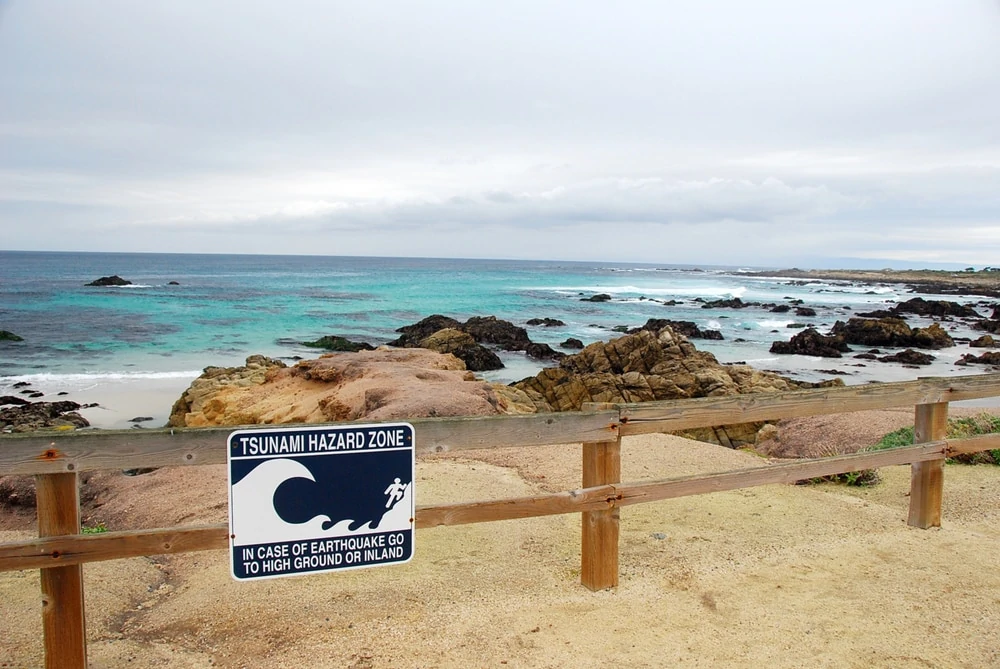
Tsunamis, born from geological forces, have captivated human imagination for ages. Earthquakes and underwater volcanic eruptions, capable of propagating seismic waves across the ocean, are often the culprits behind these colossal waves.
Contrary to popular belief, tsunamis don’t resemble typical ocean waves. Instead, they surge forward like a swiftly rising tide, resembling a massive wall of water approaching the shore.
Geological disturbances on the seafloor pose a constant threat of tsunamis. Volcanic eruptions and large earthquakes, such as the catastrophic 2004 Indian Ocean Earthquake and Tsunami, are known to trigger the most devastating events.
The magnitude 9.1 earthquake struck in the middle of the Indian Ocean, setting off the tsunami. Within about half an hour, a devastating wave hit regions like Sri Lanka and Sumatra, leaving a trail of destruction and claiming the lives of over 200,000 people across 14 countries.
To mitigate the risks, early warning detection systems and sirens are installed in many areas prone to tsunamis. If you hear a siren or receive a tsunami warning, it is crucial to stop your activities and seek higher ground immediately, while urging others in your vicinity to do the same.
22. Tropical cyclone
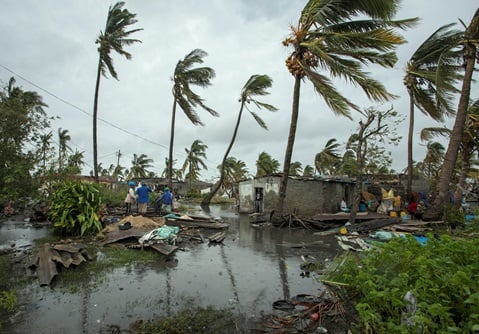
All these terms—hurricanes, typhoons, cyclones—refer to the same phenomenon: tropical cyclones.
A tropical cyclone is a rapidly rotating storm that forms over warm tropical regions with abundant moisture in the air and warm ocean waters. These storms can grow into massive low-pressure systems, bringing strong winds, heavy rainfall, and potentially devastating storm surges to coastal and inland areas.
Tropical cyclones typically develop strength and intensity as they travel across the ocean, particularly in regions like the eastern US, Caribbean, and Oceania, before making landfall.
In the Atlantic Ocean, these storms are called hurricanes when their wind speeds reach at least 74 mph (119 km/h). In the Pacific Ocean, they are known as typhoons.
As we discussed earlier, tropical cyclones can bring destructive winds, intense rainfall, and dangerous storm surges. They often cause power outages and widespread flooding, especially in low-lying coastal regions.
Regrettably, with the changing climate, there seems to be an increase in the frequency and intensity of hurricanes. Each subsequent hurricane season brings new risks and record-breaking storms, posing an ongoing threat to coastal communities. Further research is needed to fully understand the exact changes and their implications.
23. Volcanic Eruptions
 The image captured in Kuta Rakyat village, Karo, North Sumatra Province, Indonesia on March 2, 2021, shows the eruption of Mount Sinabung volcano. The eruption, depicted in the photo taken by Antara Foto, reveals the release of lava, gases, and ash from the volcano, as it pierces through the Earth’s crust.
The image captured in Kuta Rakyat village, Karo, North Sumatra Province, Indonesia on March 2, 2021, shows the eruption of Mount Sinabung volcano. The eruption, depicted in the photo taken by Antara Foto, reveals the release of lava, gases, and ash from the volcano, as it pierces through the Earth’s crust.
In popular culture, volcanic eruptions are often portrayed as catastrophic events with explosive lava, rocks, and debris. While this holds true for certain types of volcanoes, not all eruptions are equally violent.
Some eruptions exhibit a steady flow of lava cascading down the slopes, lacking the extreme violence associated with explosive eruptions. However, others, such as the eruption of Mount St. Helens in 1980, can be highly destructive and even fatal. Instances like the Eyjafjallajökull volcano eruption in Iceland in 2010 disrupted global air traffic due to the presence of volcanic ash in the atmosphere.
Although scientists have made advancements in predicting volcanic eruptions, it remains an imperfect science. While a volcanic eruption can be anticipated to some extent, pinpointing the exact timing of such an event is still beyond our current capabilities.
24. Wildfires
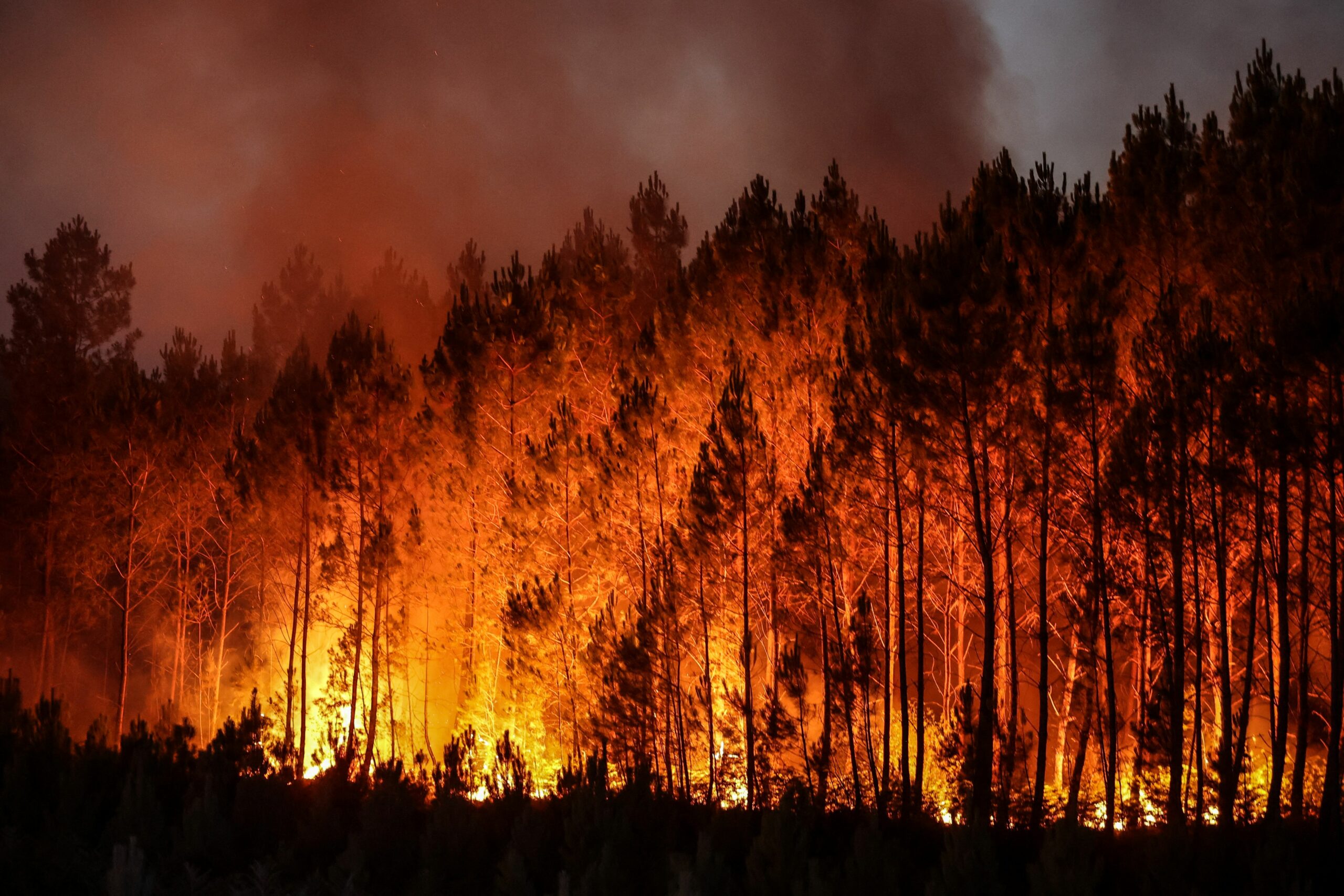
The increasing threat of wildfires has become a prominent concern in our lives. These are uncontrolled and unplanned fires that occur in various natural landscapes, including woodlands, bushlands, prairies, and grasslands.
While wildfires are a natural part of certain ecosystems, particularly in dry regions like Australia and California, they can also have devastating impacts in areas with dense human populations. These fires can rapidly spread, engulfing vast areas of land within days. However, it’s important to note that some plant species, such as lodgepole pines and eucalyptus, actually depend on fire for their reproduction, leading to positive ecological effects.
The causes of wildfires can vary, ranging from natural occurrences like lightning strikes to human activities such as campfires, downed power lines, or deliberate acts of arson. Due to the direct threat they pose to human life and property, governments have implemented systems and measures to prevent and control wildfires.
Even without a specific cause, wildfires can still be incredibly destructive. Therefore, it’s crucial to be aware of local fire restrictions and stay informed about the current fire danger when venturing outdoors during peak wildfire seasons in your region. Taking precautions and adhering to fire safety guidelines can help minimize the risks associated with wildfires.
Interesting Facts About Natural Disasters
Let’s delve into some intriguing facts about natural disasters now that you’ve gained knowledge about the 24 different types. Here are some captivating tidbits to remember as you prepare for any potential emergencies:
1| Weather-Related Hazards Dominate
According to the University of Colorado, most natural disasters fall under the category of weather-related hazards. Examples include avalanches, wildfires, and hurricanes. The other category is geophysical hazards, which encompass tsunamis and earthquakes.
2| The Costly Consequences
Natural disasters can lead to astronomical financial losses. Comparing the costs across different regions is challenging due to variations in the cost of living. However, Hurricane Katrina, which struck the United States in 2005, remains the costliest natural disaster to date, causing approximately $170 billion in damages.
3| The Impact of Climate Change
Meteorological natural disasters, such as fires and hurricanes, are increasingly common due to the effects of climate change. Hurricanes are growing stronger and occurring more frequently each year, resulting in longer and more intense hurricane seasons.
Natural Disasters FAQs
Now, let’s address some commonly asked questions about natural disasters:
How Can We Prevent Natural Disasters?
Unfortunately, preventing natural disasters entirely is nearly impossible. However, we can enhance our resilience by developing infrastructure that can withstand their impact, such as constructing buildings capable of withstanding large earthquakes. On an individual level, having emergency supplies readily available can help in preparedness. It’s recommended to maintain at least a three-day supply of food, water, and other essentials in your home.
Who Handles Natural Disasters?
After a natural disaster occurs, many nations and local governments have dedicated agencies responsible for damage assessment and providing humanitarian assistance. In the aftermath of catastrophic events like tsunamis, international organizations such as the United Nations and non-governmental organizations extend aid to affected nations.
Can Natural Disasters Be Man-Made?
Some natural disasters can indeed be triggered by human activities. For instance, wildfires that start from human-controlled campfires are a prime example. Furthermore, human actions, such as contributing to global warming and the resulting increased likelihood of catastrophic hurricanes, can exacerbate the impact of natural disasters in the long run.
